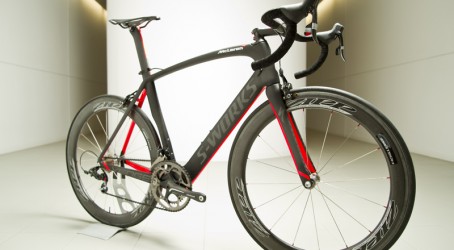Articles
Sports engineers will increasingly turn to additive layer manufacturing and nanotechnology to help athletes break records in the future, according to a report by the IMechE.
Additive manufacturing, also known as 3D printing, uses laser-based techniques to build objects layer by layer. The process enables complex geometric shapes to be built from scratch relatively cheaply as expensive machinery and tooling are not required.
The report said that this method of manufacturing is already proving popular with sports engineers as it enables the development of personalised kit. At Loughborough University a team of researchers is breaking new ground by using the process alongside industrial design and ergonomics to develop high-performance footwear that is optimised for individual athletes.
Researchers are investigating how athletes run in terms of their style, gait and the forces they apply to surfaces through contact with their feet. This information can then be used to tailor the stiffness and design of the spikes in an athlete’s running shoes to improve performance.
The government has invested almost £1 million in additive manufacturing techniques for use in sport. This funding will help entrepreneurial sports engineers to develop, manufacture and market their own products, according to the IMechE. “The demand for personalised ‘3D printed’ kit is set to rise dramatically, making this a targeted investment that is likely to bring substantial returns to the UK,” said the report.
In the field of nanotechnology, engineers are developing materials that can change shape depending on conditions. The IMechE said that this could have a “transformative” effect on sports equipment. “Oars could bend as they hit the water to improve their hydrodynamism, ship hulls could bend into corners or bicycle tyres could thicken or soften depending on terrain.”
Spray-on clothing could become a reality in a matter of years thanks to advances in nanotechnology, said the report. “A liquid-repellent coating would keep the rider dry, and thus lighter, while a protective coating could make helmets tougher without adding weight. Triathletes could use ‘spray chambers’ to change clothing instantaneously between the swimming, cycling and running events, tailoring their outfit for each event.”
At this year’s Olympics, the British team will be reaping the benefit of a range of technologies that were originally developed for use in the wider world of engineering and have now been applied to sport. Cyclists training at the Manchester velodrome have benefited from a BAE Systems laser timing system that is accurate to within a millionth of a second. It was originally developed for the battlefield.
The Paralympic basketball teams have been training using radio signals to track their movements with a McLaren Applied Technologies system designed for Formula One racing. At the games, the sailing and mountain biking teams will showcase a nano-coating that repels water and was developed for the Ministry of Defence.

British Olympic hopefuls
P2i nano-coating technology
Oxfordshire-based P2i is a world leader in liquid-repellent nanotechnology. Its nano-coating reduces the surface energy of a product, so that liquids which come into contact with it form beads and run off. By repelling liquids, sporting equipment does not gain any extra weight from water during competitions.
McLaren Applied Technologies indoor tracking of athletesMost athlete tracking systems use GPS and so do not work indoors. The McLaren system uses radio signals to track movement indoors and generate realtime data that can be fed to coaches. With wheelchair basketball players, the system creates a ‘snail trail’ that shows how fast athletes go, when they rest, and rapid changes in acceleration. This gives coaches information to tailor training regimes and see if improvements could be made to the chair.
BAE Systems laser timing
BAE Systems has been working with UK Sport since 2008. Its laser-timing technology improves on previous ‘break-beam’ systems that cannot differentiate between cyclists. With the new system up to 30 cyclists can train at the same time as a laser reads a personalised code from a reflective tag attached to each bike.